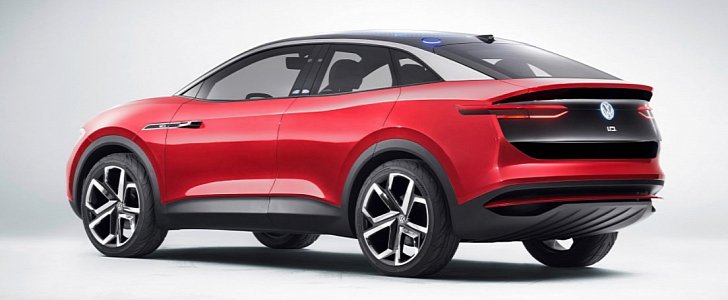The German company that was once trying to convince Americans to try out diesel engines in their passenger cars is now trying to erase the past by launching a battery-powered offensive supported by its I.D. range of electric vehicles.
Volkswagen's sudden change of heart can be traced back to the Dieselgate scandal which might go down in history as the beginning of the end for all diesel cars, regardless of their manufacturer. As a response, most companies have accelerated (or kickstarted) their EV programs, and the Wolfsburg-based manufacturer made no exception.
In the very short period of two years since the scandal erupted, Volkswagen has already shown three concepts it plans on producing, as well as announcing the intent of offering 12 more by 2025. Those three are the I.D. - a hatchback model it hopes to become the Golf of EVs -, the I.D. Buzz - a minivan that's a tribute to the original VW Bus -, and the I.D. Crozz - a crossover which will do its best to quench the market's thirst for this type of vehicles.
All three will be on display at the Los Angeles Auto Show starting today, but Volkswagen held an event on Tuesday during which it announced that the production version of the Crozz would be sold in the U.S. as well and that it would become available no later than 2020.
Volkswagen has already shown two versions of its concept, the first in April in Shanghai, marking its debut, and the second this fall at the Frankfurt Motor Show. The crossover is still very much a concept with its lack of a B-pillar, sliding rear doors, and an exaggeratedly futuristic interior, but the company suggests its specs will pretty much be carried over on the actual car.
That means the I.D. crossover will get all-wheel-drive thanks to the two electric motors mounted on each axle with 200 hp at the rear and 100 hp at the other end. The battery pack is said to have a very uneven 83 kWh capacity that should offer it a maximum range of up to 300 miles. Whether that's according to the NEDC or EPA is up to anyone's guess, but considering it's a European car, it's probably the former.
That means the real-world performance should be significantly lower, but it will still beat the 200 miles mark. Besides, Volkswagen promises a charging system that would fill up the battery to 80 percent in just 30 minutes, meaning long journeys will be made possible by reducing the time spend plugged-in.
In the very short period of two years since the scandal erupted, Volkswagen has already shown three concepts it plans on producing, as well as announcing the intent of offering 12 more by 2025. Those three are the I.D. - a hatchback model it hopes to become the Golf of EVs -, the I.D. Buzz - a minivan that's a tribute to the original VW Bus -, and the I.D. Crozz - a crossover which will do its best to quench the market's thirst for this type of vehicles.
All three will be on display at the Los Angeles Auto Show starting today, but Volkswagen held an event on Tuesday during which it announced that the production version of the Crozz would be sold in the U.S. as well and that it would become available no later than 2020.
Volkswagen has already shown two versions of its concept, the first in April in Shanghai, marking its debut, and the second this fall at the Frankfurt Motor Show. The crossover is still very much a concept with its lack of a B-pillar, sliding rear doors, and an exaggeratedly futuristic interior, but the company suggests its specs will pretty much be carried over on the actual car.
That means the I.D. crossover will get all-wheel-drive thanks to the two electric motors mounted on each axle with 200 hp at the rear and 100 hp at the other end. The battery pack is said to have a very uneven 83 kWh capacity that should offer it a maximum range of up to 300 miles. Whether that's according to the NEDC or EPA is up to anyone's guess, but considering it's a European car, it's probably the former.
That means the real-world performance should be significantly lower, but it will still beat the 200 miles mark. Besides, Volkswagen promises a charging system that would fill up the battery to 80 percent in just 30 minutes, meaning long journeys will be made possible by reducing the time spend plugged-in.

